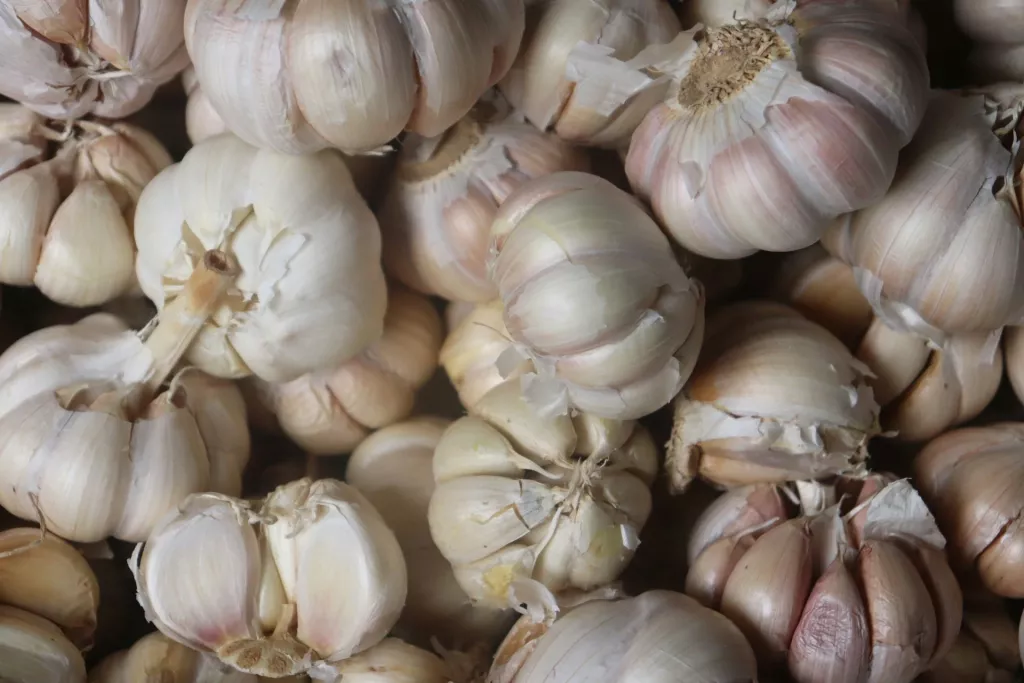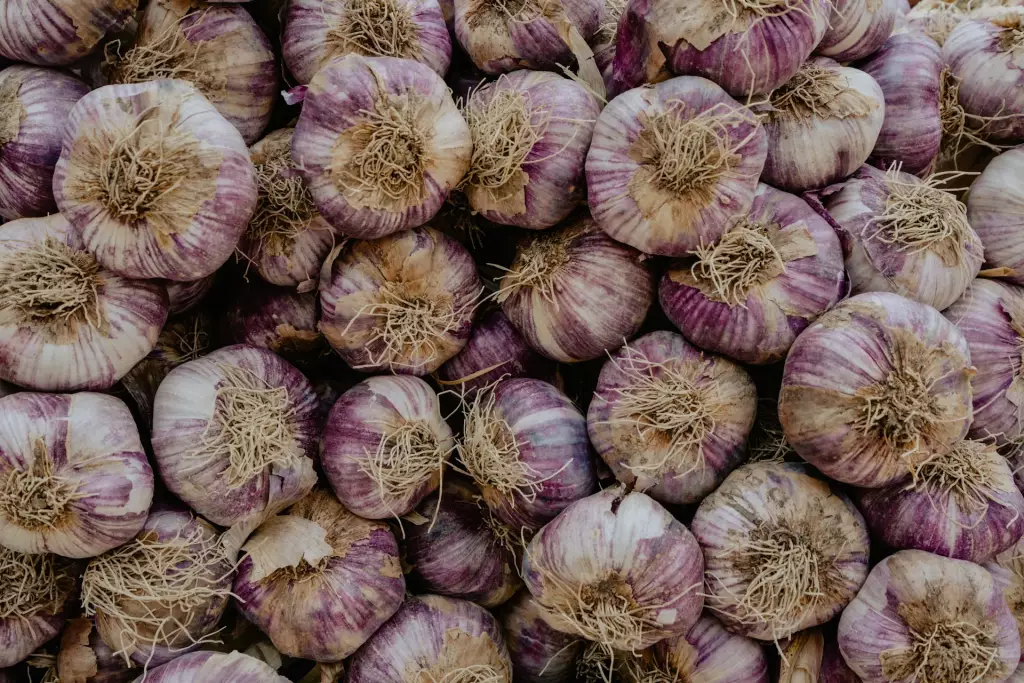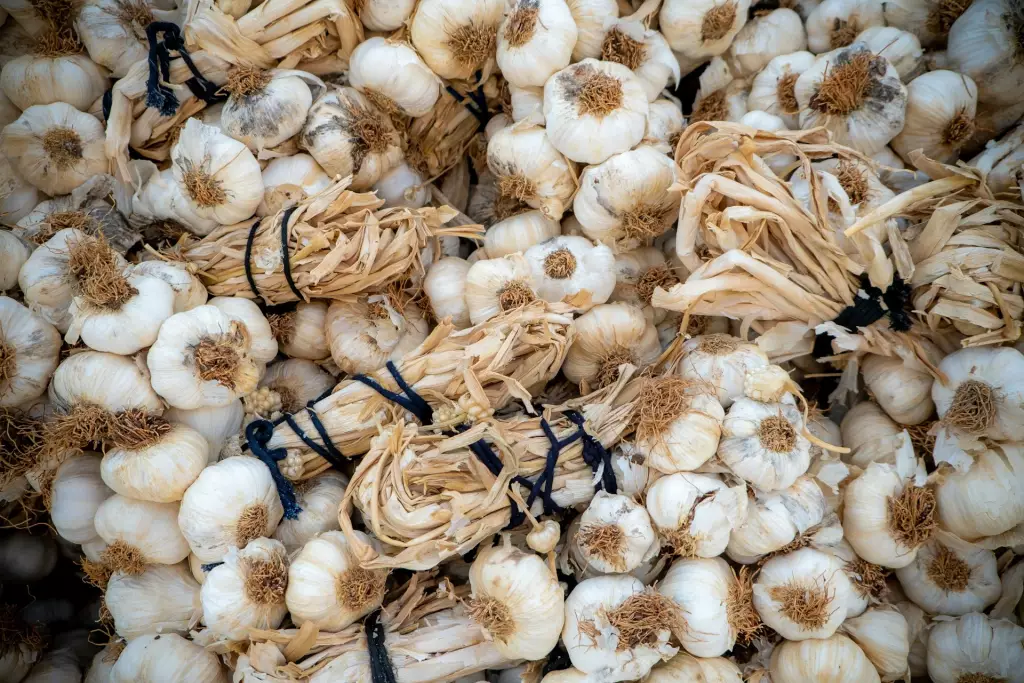Garlic Production by Country in 2024: Top 15 Countries
In 2024, global garlic production continues to be a significant agricultural sector, reflecting its widespread use and demand. Whether you're a food enthusiast or interested in agricultural economics, keeping an eye on garlic consumption by country tells a story of changing palates, evolving diets, and even the health trends that drive demand for this essential ingredient.
China remains the top garlic producer globally, with over 23 million tons in 2024. It's followed by India, Bangladesh, South Korea, Egypt, Spain, the United States, Algeria, Uzbekistan, Ukraine, Myanmar, Russia, Ethiopia, Argentina, and Brazil. These countries produce the highest volumes of garlic worldwide.
There's a city that celebrates its association with garlic through the annual Gilroy Garlic Festival, an event that attracts visitors from all over the world to enjoy a wide variety of garlic-infused foods. It's also known as the Garlic Capital of the World. Which city is it? Find out below.
Summary
- China dominates the market, producing nearly three-quarters of the world's garlic, while India and Bangladesh also play key roles in the industry, focusing on both domestic consumption and export markets.
- The United States, particularly recognized for its high-quality garlic, contributes 237,340 tonnes.
- South Korea is known for its technologically advanced agriculture, while Spain's "ajo morado" is highly valued.
- Countries like China provide substantial support to their farmers, while trade measures and quality standards in the US and EU influence global market dynamics.

Top Garlic Producing Countries
Below is a simplified table summarizing the leading garlic producers:
| Country | Production (tons) |
|---|---|
| China | 23,305,888 |
| India | 2,910,000 |
| Bangladesh | 466,389 |
| South Korea | 387,671 |
| Egypt | 318,800 |
| Spain | 271,350 |
| United States | 237,340 |
| Algeria | 223,311 |
| Uzbekistan | 216,272 |
| Ukraine | 215,070 |
| Myanmar | 208,908 |
| Russia | 202,120 |
| Ethiopia | 152,595 |
| Argentina | 152,595 |
| Brazil | 131,523 |
These statistics are sourced from various data including World Population Review, and Wikipedia.
As of 2024, global garlic production has seen significant variance, with China leading as the world's largest producer, contributing to over two-thirds of the global supply. This dominance in garlic cultivation is followed by countries such as India, Bangladesh, and Egypt, each with their own unique climates and agricultural practices that facilitate garlic growth.
The cultivation of garlic is influenced by factors including climate, soil type, and agricultural techniques, making it a staple crop with both culinary and medicinal value across various cultures.
The garlic production process, from seeding to harvest, is integral to the economic and culinary fabric of many cultures. Especially in Asia, garlic is not just a flavor but a cornerstone for health and flavor in food.
China's dominance in garlic production
China stands as the unrivaled leader in garlic production, contributing to nearly three-quarters of the world's supply. With an astounding output of 23,305,888 metric tonnes, Chinese garlic dominates both domestic and international markets, making it the foundation of the global garlic industry.
China implements advanced irrigation and planting techniques to sustain its status as the world's top garlic producer, contributing to nearly 74% of the global output.

China holds the title for the largest garlic producer globally, with provinces like Shandong and Jiangsu at the forefront. The city of Jinxiang is often referred to as the world's garlic capital.
India's rising garlic industry
In India, garlic is integral to many cuisines and is a key ingredient in a variety of chutneys. Garlic production here caters largely to domestic consumption, but there's a growing export market as well.
India holds second place with 2,910,000 tonnes of yearly production, indicating a solid and growing presence in the garlic production landscape. Farmers in India opt for organic farming and traditional methods to appeal to health-conscious consumers.
Garlic production in Bangladesh
Bangladesh has emerged as a notable garlic producer, with its production reaching 466,389 tons in 2024. Garlic is widely cultivated in Bangladesh, and it's a common ingredient in Bengali cuisine.
Garlic farming in Bangladesh is often characterized by smallholder farmers, with an increasing focus on sustainable and organic farming practices to meet both domestic and international demand.
South Korea is known for its unique garlic varieties
South Korea, with a production of 387,671 tons, emphasizes technologically advanced agricultural practices. The country has developed efficient garlic cultivation techniques, including controlled environment agriculture, to maximize yield and quality.
South Korea is known for its unique varieties of garlic, including Korean red garlic. The country has a strong domestic market for garlic, and it is used extensively in Korean cooking. South Korea also exports garlic, mainly to neighboring Asian countries.
Egypt is one of the top garlic producers in Africa and the Middle East
Egypt produced 318,800 tons of garlic, capitalizing on its favorable climate and the Nile River's fertile plains. The country employs both traditional farming techniques and modern irrigation methods to enhance production.

The climate in Egypt is favorable for garlic cultivation, and the country has a long history of growing the crop. Egyptian garlic is known for its high quality and is exported to many countries, especially in Europe and the Middle East.
Spain is a significant garlic producer in Europe
In Spain, garlic production stood at 271,350 tons. The country is famous for its "ajo morado" (purple garlic), especially from the Las Pedroñeras region, known as the garlic capital. Spanish garlic cultivation is deeply rooted in tradition, with a strong emphasis on quality and geographical indication protection.
The region of Castile-La Mancha in Spain is particularly famous for its garlic production. Spanish garlic is often exported, and the country is one of the leading suppliers to the European market.
The United States, particularly California, is a major garlic producer
The United States produced 237,340 tons of garlic, with California leading as the primary garlic-producing state. U.S. garlic production is characterized by large-scale commercial farms and advanced agricultural technology, focusing on meeting both domestic consumption and export demands.
Gilroy, California, is nicknamed the "Garlic Capital of the World," and the state's climate is well-suited for garlic farming. The nickname stems from the city's long history of garlic farming, which has been a significant part of its economy and cultural identity.
Gilroy's climate, characterized by mild, wet winters and warm, dry summers, is particularly favorable for growing garlic. This conducive climate, along with the fertile soil in the region, allows for the cultivation of garlic on a large scale. The city celebrates its association with garlic through the annual Gilroy Garlic Festival.
Garlic production in Algeria contributes to the domestic supply
Algeria's garlic production reached 223,311 tons. The country's agriculture benefits from its diverse climates, allowing for a variety of crops. Garlic in Algeria is grown in several regions, with an emphasis on expanding production to reduce imports and increase self-sufficiency.
Uzbekistan produces garlic mainly for domestic consumption
Uzbekistan, with a production of 216,272 tons, illustrates the importance of garlic in Central Asian cuisine and agriculture. The country's farming practices often blend traditional methods with modern techniques to improve yield and quality.

Ukraine exported garlic, mainly to European markets
Ukraine produced 215,070 tons of garlic. The country's agricultural sector has seen growth in garlic production, driven by both domestic demand and export potential. Ukrainian garlic is gaining recognition for its quality in international markets.
Garlic is one of the important crops in Myanmar
Myanmar's garlic production of 208,908 tons reflects its role in both the domestic diet and as an export crop. Garlic farming in Myanmar is integral to rural livelihoods, with efforts underway to enhance production techniques and market access.
Russian garlic production is primarily for domestic consumption
With 202,120 tons of garlic produced, Russia's cultivation is adapted to its varied climatic zones. The country is focusing on increasing self-sufficiency in garlic production through improved agricultural practices and technologies.
Garlic in Ethiopia is part of the traditional Ethiopian diet
Ethiopia produced 152,595 tons of garlic, highlighting its role in Ethiopian cuisine and as a crop that supports smallholder farmers. The government and various NGOs are working to boost productivity and market access for garlic producers.
Argentina's garlic is prized for its quality and flavor
Argentina's garlic production was 147,649 tons. The country is known for its high-quality garlic, with a significant portion destined for export, especially to Brazil and the European Union. Argentine garlic cultivation benefits from favorable climatic conditions in regions like Mendoza and San Juan.
Brazil's garlic production is mostly for domestic consumption
Brazil, with a production of 131,523 tons, shows a growing interest in garlic cultivation to reduce import dependence. Brazilian garlic production focuses on meeting domestic demand, with an increasing emphasis on sustainable practices.
States like Minas Gerais and Goiás are among the main garlic-producing regions in Brazil. The climate in these areas is suitable for garlic cultivation, allowing for a significant output. Despite this, Brazil still imports a large amount of garlic, primarily from Argentina and China, to meet its domestic demand.

Garlic's influence on regional cuisines underlines its cultural importance in daily consumption patterns. These patterns, in turn, drive the local garlic market, ensuring a steady demand for this robust crop.
Exportation Trends
In 2024, the garlic industry's exportation dynamics are shaped by a few key players and market forces, including price elasticity and countries' import demands.
Leading exporters of garlic
China remains the undisputed leader in garlic exports, contributing significantly to the global market. India, Spain, Argentina, and Egypt follow, each strengthening their presence and impacting global supply chains.
Price and demand fluctuations
The price of garlic is often a reflection of several factors, including weather patterns, production yields, and international demand. The garlic market size has implications for the price points; for instance, an estimated increase to USD 616.20 million by 2029 suggests a rising trajectory for demand and possibly prices.
Importing countries and their needs
Countries such as Canada, Malaysia, and the United States rely on garlic imports to satisfy consumer demand for both fresh garlic and products like garlic powder, which is integral in various cuisines. European nations also import significant amounts to fulfill their needs, particularly in areas where domestic production is limited.
Agricultural Policies
As you consider the global garlic market, it's vital to understand the specific agricultural policies that countries implement which directly impact garlic production. These policies shape the domestic industry and influence international trade.
Subsidies and government support
China, which is a leading producer in the garlic production landscape, offers various subsidies to garlic farmers, helping them to maintain competitive prices and sustain high production levels. In contrast, countries with emerging garlic industries might provide seed or technology subsidies to encourage industry growth and modernization.
Trade restrictions and quality standards
Trade restrictions include tariffs and import bans, which can be used to protect local garlic producers from foreign competition. The Food and Agriculture Organization collaborates with countries to set international food safety and quality standards.
Higher quality standards can limit imports to ensure that the domestic garlic market receives preference. For example, the US and EU have strict quality controls on garlic imports, affecting how the international trade operates in these regions.



